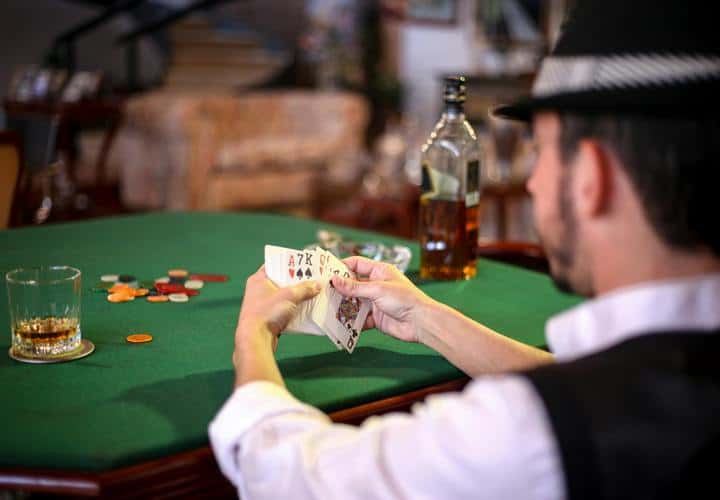Casino gaming, both at real-life casinos and at online casinos can seem like a seductive dimension of chance and the win-lose outcome. But, at the heart of every spin of a roulette wheel or a dice roll, there is a powerful mathematical system just to make money for casinos. We’ll discuss the mathematics that underpins diverse games of the casino, ranging from slot machines to poker, to grasp how the games work and the reason why “the house always wins”.
The house always wins: Why it matters
The common thread across all casino games is the house edge, which is a mathematical certainty ensuring that casinos profit in the long run. Although players may experience short-term victories, the odds are always to the house’s advantage during prolonged play.
Slots: The RNG mechanism and RTP percentages
Slots are the most played casino games, both in and online, and the allure of slot games stems from ease of play and visual attractiveness. But beneath their bright colors are intricate mathematical patterns.
How slots work
Casinos employ Random Number Generators (RNGs) to determine the outcome of each spin. These algorithms ensure that each result is independent of the last, creating the illusion of unpredictability.
For example, a three-reel slot with 25 symbols per reel has 15,625 possible combinations per spin (25 * 25 * 25). Yet there are some outcomes with low probability in depth, winning combinations are deliberately uncommon.
Return to Player (RTP)
The RTP percentage indicates how much of the total wagers a slot game returns to players over time. If an RTP of 96% is set for a slot machine, it will pay the player $96 for every $100 wagered over the same long run.

The remaining 4% constitutes the house edge. Slot games are built such that there is this payout distribution in which some such high valued outcomes are very rare and are balanced out by frequent low valued outcomes.
Volatility and paytables
Slot volatility, such as variance, describes the risk of the game. Low-volatility slots pay out small amounts more often, and high-volatility slots pay out larger amounts less often.
Paytables are descriptors of the prize amounts, and the chance to obtain particular groupings, and they are thereby useful to the players in determining the risk associated with the game.
Roulette: Probability and house edge
Roulette is a game of pure chance, but the design of the game guarantees that the house holds an edge whatever the play of the bettor is in that game.
American vs. European roulette
The main distinction between versions is the number of pockets. American roulette has 38 pockets (1-36, 0, and 00), whereas European roulette has 37 (1-36 and 0). This subtle difference significantly impacts the house edge:
- American Roulette: House edge of 5.26% (2/38 probability for a zero or double zero).
- European Roulette: House edge of 2.7% (1 out of 37 probability for a single zero).
Bet types and payouts
The way that payouts have been structures for roulette bets means that they offer less than the true odds of winning. Take this example for European roulette: A stright-up bet on a single number will pay 35:1, however, the real odds of landing 1 result are 36:1. This discrepancy ensures the casino will profit over time.
Blackjack: Probability meets strategy
Blackjack differs from a lot of casino games for the fact that it involves a mix of chance and skill. Players that know the underlying probabilities, can reduce the house edge drastically.
The house edge
For blackjack, the average house edge ranges from 0.5% to 2.74%, which will depend on the rules and the skills of the player. It is various factors that can influence the edge, including deck penetration, dealer rules (for example, hitting on soft 17), and the payout ratio for blackjack (can for example range fom 3:2 to 6:5).
Basic Strategy and Card Counting
Employing a simple strategy, which is playing decisions that are based on the dealer’s open card, and the player’s total, reduces the house edge. Sophisticated players apply card counting methods for monitoring the percentage of high-value cards and increase betting when such an advantage is in their favor. Casinos counter this by using multiple decks and frequent shuffling.
Poker: Expected value and bluffing
In contrast to the other casino games, in poker players compete with each other and not the house. The casino makes money through a “rake”, which is a portion of every pot.
Expected Value (EV)
In poker, the EV is used to help players make optimal decisions by comparing possible outcomes. For instance, if you are calling a $10 bet with a 20% of winning a pot consisting of $50, it will yield a positive EV:
EV = (0.2 /times 50) – (0.8 /times 10) = +$2.
By successively making positive EV decisions, ultimately profit is made.
Bluffing and psychology
Although such math informs a variety of decisions, poker itself is driven, in part, by psychological factors such as bluffing and opponent reading. Adding a new strategic dimension, by balancing probabilities with player actions, is a reinforcement.
Craps: Complexity in simplicity
Craps is one of the most active casino games with a range of bets and results. The maths guarantees a variable house edge, which depends on the type of bet.
Pass Line bets
One of the lowest betting options in craps, the Pass Line, has a house edge at 1.41%. Players win when the come-out roll is a 7 or 11, and players lose when the come-out roll is a 2, 3, or 12.
In the case of other numbers, the game turns into a point phase, which introduces further complexity and probability.
High-House-Edge bets
Complex bets like “Any 7”, which is betting that the next roll will total seven, have house edges exceeding 16%. Such wagers are made for gamblers but are a drain on bankrolls.

